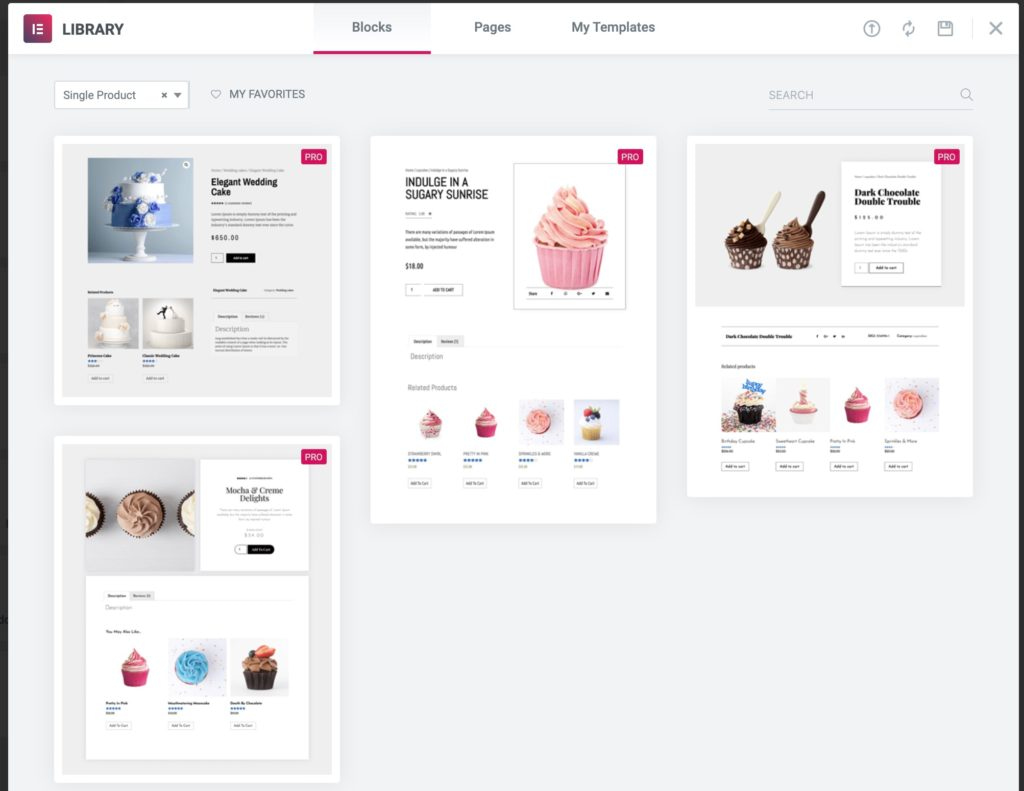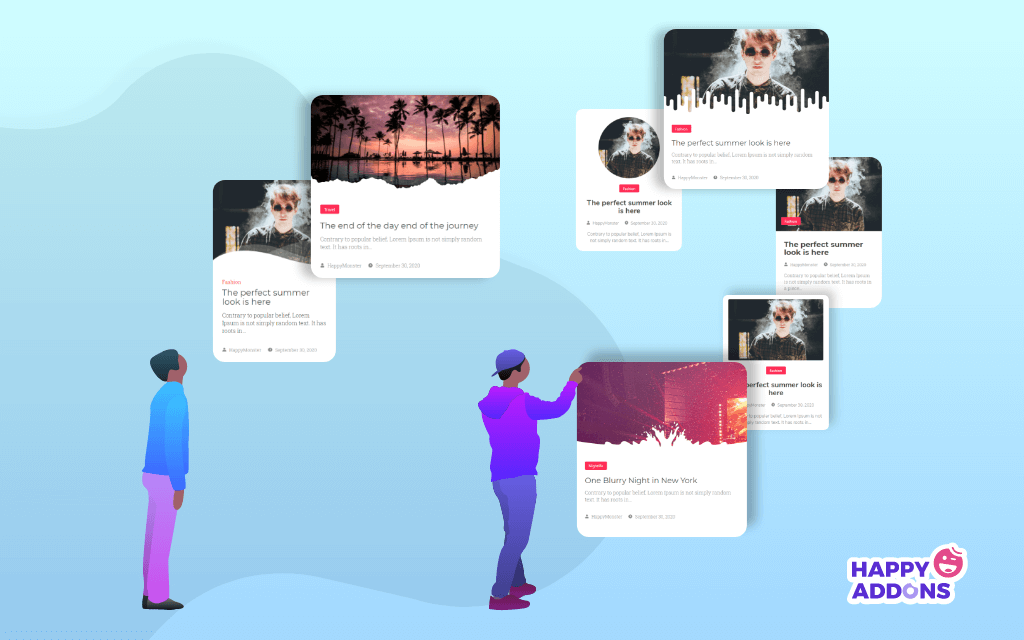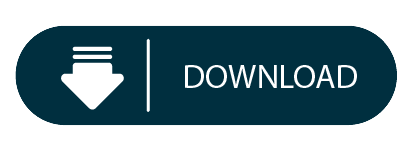You should try to change the page template in Elementor. When editing a page: click on the wheel at the bottom left (settings) and choose the “default” template or the “full width” template. It worked for me. Blog Designer is All in One Solution for Blogs. It’s comes with Post Carousel, Post Slider, Post Blocks, Blog Page with Pagination. Blog Designer for Elementor is a good handy and free solution for everybody who is trying to design/create a responsive blog page with the web site. Blog Designer can be used with any kind of WordPress website. Get the latest news and updates about the Elementor website builder for WordPress, plus tutorials and other interesting posts about web design and WordPress.
Hello,
I’m stating using this theme on a local host recently and really I’m impressed!
Straight to the point,
I’ve built a website everything through Elementor!
but when it comes to the blog page! it doesn’t work! There’s possibility done that by Elementor or just by the theme customize!
I’ve adjusted the Reading Settings to the front page (Elementor page for landing),
And the Posts page: to a blog page created by me! but as I mentioned can’t edit it through Elementor since it’s for the blog! only through theme customize…Please Advise!
BlogLentor is a user-friendly Elementor based addon plugin for creating beautiful blog posts, post listing, post slider and post carousel within a few seconds. Every setting is. Put simply, Elementor is a WordPress page builder plugin. Page builder functionality allows you to control nearly every visual aspect of your website, along with creating custom layouts, designs, and pages. Elementor isn’t itself an actual theme, but instead pairs with virtually any existing WordPress theme.
- created: 06/12/2019
- latest update: 04/10/2020
- by: Codevibrant
- email: info@codevibrant.com
Introduction
Blog Post Layouts is a powerful Premium WordPress plugin that lets you modify layouts for your blog posts. It comes with multiple archive layout types: Grid, List and Masonry. There are 5 distinct variations of each type that will suit your website designs preferences and requirements. With this plugin, you can also sort design elements in preferrable layouts to match your taste. You can easily customize typography options for block title, post title, content and others. Plus you can also add custom typography as you prefer.The best part about this plugin is that it lets you re-order your WordPress posts in ascending and descending order based on publish date, title and id. It also gives you control over the number of posts to display in homepage.Blog Post Layouts is totally compatible with Gutenberg and works perfectly with Elementor Page Builder as well. Apart from that, it features custom post type support, set content length, google fonts, category select option and so on.Our documentation gives all the necessary detailed information to get you started. It provides an elaborated overview on plugin features, how to use those features and how to troubleshoot errors.
Plugin Installation
- Buy Blog Post Layouts from codecanyon.net and save the downloaded plugin zip file on your hard drive.
- Blog Post Layouts plugin in a zip file.
- Go to Dashboard >> Appearance >> Plugins >> Add New.
- Click on Upload Plugin button at the top and browse the blog-post-layouts.zip file from the extracted/unzipped in your computer file location.
- Click on Install and then activate the plugin.
- Click on Dashboard >> Blog Post Layouts for further setup.
Plugin Features
- Compatible with Gutenberg Editor and Elementor PageBuilder.
- Archive your default posts.
- Supports Custom Post Type.
- Multiple archive layout types ( Grid, List and Masonry )
- Each layout with 5 different variations
- Multiple Archive Columns ( upto 5 columns )
- Category Select option - display posts from specific category.
- Element Sorting Option in preferrable layout only( Thumbnail, Title, Content, Meta, Button ). Select the element order with your choice and design.
- OrderBy and Order Options - display your posts in descending, ascending manner w.r.t to post date, title and id.
- Post Count Option - number of posts to display
- Set content length option.
- Show/Hide option for meta, content.
- Show/Hide post margin option.
- Show/Hide icon for meta and button.
- Color options.
- Enable/Disable custom typography option.
- Flexible Typography option available for Block title, Post title, Content, Meta, Button
- Numerous google font variations.
Gutenberg is a WordPress new default editor that focuses on block-based approach. To get you started with Gutenberg, checkout Gutenberg guide for beginners to be armed to the teeth when you begin.
Once, you have finished installation and activation of Blog Post Layout Plugin, It's time to create your first template.
- Go to WordPress dashboard and click on Blog Post Layout from the panel.
- Next, go to dashboard tab. Then scroll down and click on Create first Template.
- Click on the plus icon and search blog post layouts block.
- You'll see CV grid post layout, CV list post layout and mansonry post layout.
- Choose any one prefferd post layout.
- Publish the post to save the changes.
Configure Basic Settings
You can manage

- First, enter the block title name under the box title. If you add the block title, you can get block title layout and Text Align.
- Next, choose the post type from available option.
- Select the preffered catregory from drop down option to display category wise post.
- Then choose the number of post that you want to display at a time on your site.
- Slide show/hide option to display content.
- Then choose the content type from drop down option.
- Manage the content length.
- Enter the button lable text on the box.
Configure Query Settings
- display your posts in descending, ascending manner w.r.t to post date, title and id.
- Click on show/hide option to display meta date such as date, author, and category.
- Click on show/hide option to display category count.
- Selelct the number of category count that you want to display at a time on your site.
- Click on show/hide option to display tags count.
- Then manage the number of tags count that you want to display at a time on your site.
- Click on show/hide option to display numbers of comments.
- Then, click on Save & Publish button.
Configure Fallback Image
Fallback Image is similar to Features Image. By configuring fallback image feature, you can set a branded image to be used when no other image is found. In case there is neither other image nor fallback image is associated then plugin's default image will be used in place of fallback image.
- Click on set fallback image. Then choose a image from media liabrary or upload one from your computer.
- Finally click on select.
Configure Advanced
From here, you can customize the layouts and typography by adding additional CSS.
Style Setting
Configure Layouts Settings
This option allows you to choose 5 different layouts and customize it as you see fit.
- Select a suitable layout from available option under the List Layout Variations.
- Click on the show/hide option to display post fromat icon, and post meta before icon respectively.
- Again, click on the show/hide option to display read more button icon.
- Manage number of block colum to add from drop down option.
- Click on show/hide option to allow a margin(big space) between each single posts.
Configure Element Sorting
Available in Grid & Mansonry Layout only
You can sort element by simply drag and dropping the element in the preffered order .
Configure Typography settings
This option gives you complete controll over customization of typography of your blog posts.
- Click on the enable/disable button to obtain default settings from plugin tyography.
- Next choose Block Title tab to customize the typography.
- Font Family- set block title font family from available google fonts option.
- Font Weight- set font weight of block title from drop down option.
- Font Size- Set block title font size in the box.
- Font Style- choose any one font style from normal, italic or oblique options.
- Text Transformation- Select lowercase, uppercase or capitalize the text transformation.
- Text Decoration- Select block title text decoration.
- Font Color- set title font color.
- Border Color- set block title boder color.
- Line Height- set block title line height.
Similarly, you can configure the typography of other given component like Post title, Content/ Excerpt, Meta and Button.
Configure Advanced
From here, you can customize the layouts and typography by adding additional CSS.
Blog Post Layouts plugin is compatible with the page builder. So, we recommend to install and activate the Elementor Plugin.
How to use Blog Post layouts using Elementor?
After successfully installation the plugin, you need to create your page. First, Navigate to WordPress Dashboard >> Pages >> Add New. The default page editor form will open then you need to switch to the Elementor page editor using Edit with the Elementor button.
At the left side of the screen - you can see the default elements along with Blog Post Layout Elements. Go to the Blog Post Layouts Elements and Choose the available layout (CV Grid Post Layout, List Post Layout and Masonry Post Layout) and drag in the 'Drag widget Here' area.
Now, you can manage the content, style, or use advanced styling options from the left column.

Configure General Settings
From the content section, you can manage the General settings, Query Settings and Fallback Image of the layouts.
- First, enter the block title name under the box title.
- Next, choose the post type from available option.
- Select the preffered catregory from drop down option to display category wise post.
- Then choose the number of post that you want to display at a time on your site.
- Slide show/hide option to display content.
- Then choose the content type from drop down option.
- Manage the content length.
- Enter the button lable text on the box.
Configure Query Settings
- display your posts in descending, ascending manner w.r.t to post date, title and id.
- Click on show/hide option to display meta date such as date, author, and category.
- Click on show/hide option to display category count.
- Select the number of category count that you want to display at a time on your site.
- Click on show/hide option to display tags count.
- Then manage the number of tags count that you want to display at a time on your site.
- Click on show/hide option to display numbers of comments.
- Then, click on Save & Publish button.
Configure Fallback Image
- Choose the image from the media library/ Upload the image and display the thumbnail image.
Configure Style Settings
From the Style Section, you can manage the Style Setting, Element Sorting and Typography Section.
- Choose the Align Option from the avaliable drop-down option.
- Similarly, choose the Grid Layout Variations from the avaliable drop-down option.
- Click on show/hide option to display Post format icon, Post meta before icon, and Read more button icon.
- Choose the Block Column from the avaliable drop-down option.
- Click on show/hide option to allow margin between each post.
Configure Element Sorting
- You can sort the avaliable elements: Thumnnail, Title, Meta,Content,and Button as you want and display in the page.
Configure Typography Section
- Click on show/hide option to Inherit default from plugin typography.
FAQs
1. Is Blog Post Layouts Compatible with Guteberg Editor?
Yes, Blog Post Layouts is fully compatible with Guteberg editor. In fact this plugin is compatible latest WordPress version along with major plugins and themes available in WordPress.
2. Can I manage my content length on blog page?
Elementor Blog Post Template
Yes, this plugin lets you controll content length on blog posts and pages.
3. Can I use Blog Post layout with Elementor Page Editor?
Absolutely, Blog Post Layouts is fully integrated with Elementor Page Editor. You can use this plugin with elementor to design your website with out any problem.
Elementor Blog Page Free
4. Do Blog Post Layouts has any typography option?


Yes, this plugin comes with a highly flexible and customizable typography option. It allows you to
Once again, thank you so much for installing the Blog Post Layouts Plugin. We have designed and developed the most impressive post-layout designs for Gutenberg and Elementor ! If you have any confusions, please free to ask us any questions related to this plugin.
